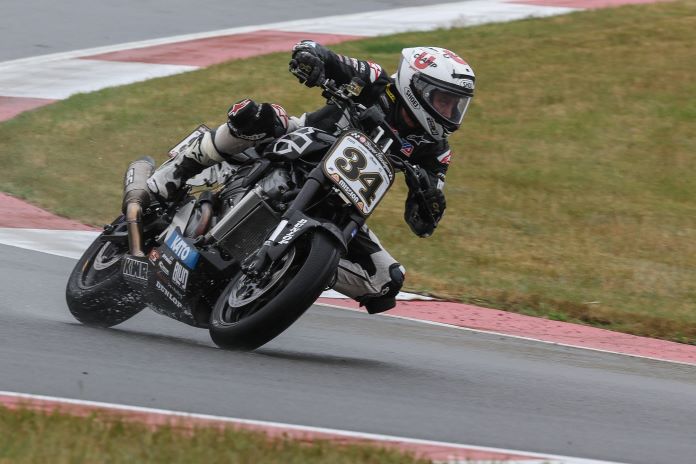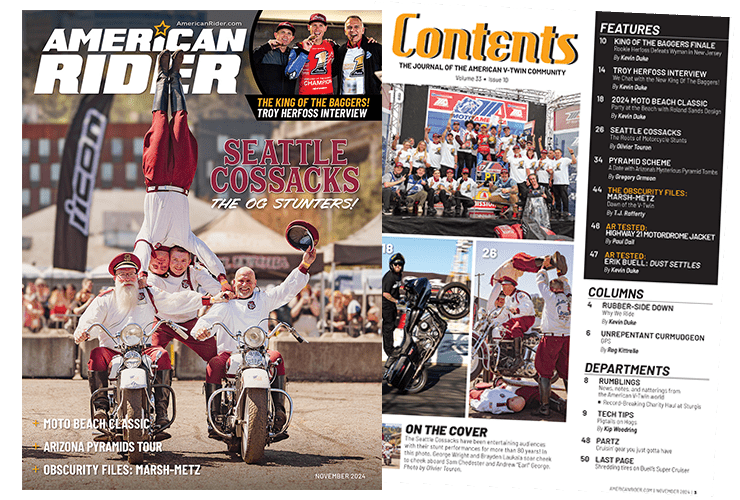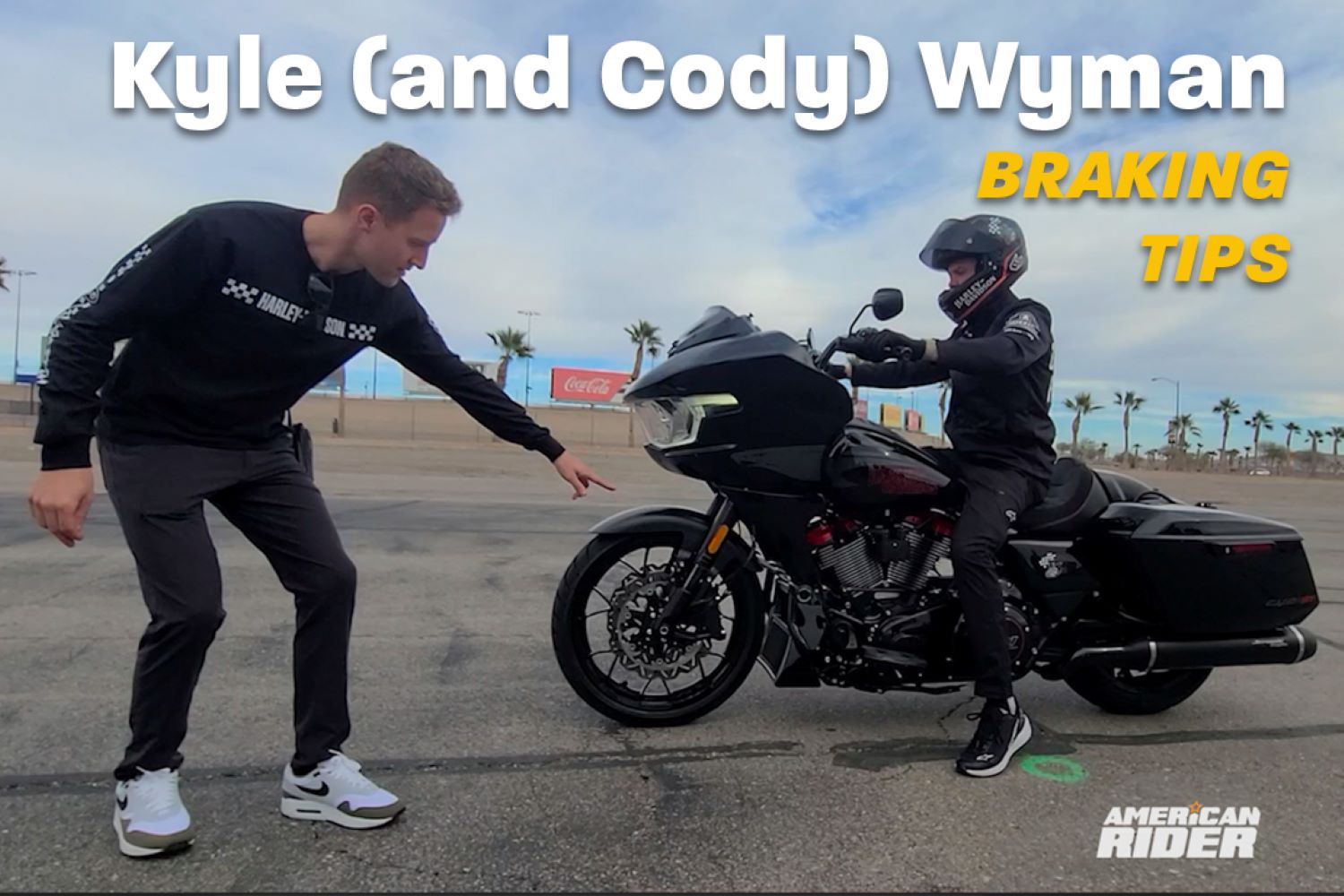The King Of The Baggers is a thrilling roadrace series between V‑Twin baggers from Harley and Indian duking it out on circuits around the country in MotoAmerica’s hottest racing class. In this video, KOTB racer Kyle Wyman and brother Cody explain professional motorcycle braking techniques that can help you become a better rider.
Kyle Wyman is the most successful racer in KOTB history, the winner of nearly half the races since the series debuted in 2020. He’s the lead rider on Harley-Davidson’s Screamin’ Eagle factory team, and he played a role in developing the recently introduced CVO Road Glide ST.
2024 Harley-Davidson CVO Road Glide ST Review
In this video shot at the CVO ST’s introduction, Wyman demonstrates how to apply a bagger’s brakes for optimal speed retardation, as outlined by brother Cody Wyman, who races a KWR/Harley-Davidson Pan America in MotoAmerica’s Super Hooligan class.
The braking demo begins with Kyle coming to a quick stop but without trailing off the brakes, causing the front end to rebound quickly when stopped. He then repeats the drill but eases off the front brakes so the fork doesn’t rebound abruptly.
“I’m just playing with that brake pressure and then trying to trail it off nicely and control that rebound to the front forks,” Kyle noted.

The Wymans also advised how this technique applies while trail-braking into corners.
“It’s the same thing,” Kyle said. “When we move that into a corner, it’s that same action of just controlling that fork and controlling that load as we transition from braking force to cornering force.”
Next, Kyle slows as rapidly as possible from about 30 mph while using only the rear brake. As you’d expect, the Road Glide travels a lot of distance before coming to a stop.
Next up, Kyle approaches at the same speed and uses both the front and rear brakes, but he isn’t covering the brake levers. The Road Glide comes to a much quicker stop than using only the rear binder, but the split second of time it takes to reach and apply the levers translates into wasted time and space that might mean the difference between coming to a safe stop or hitting a vehicle in front of you.
“If you’re really good,” Cody relates, “it takes about half a second to close the throttle and then reach for the brake. At 60 mph, that’s 44 feet before the brakes come on.”

Finally, Kyle conducts the same drill but is covering both brake levers, drastically reducing the amount of time between identifying a potential collision and scrubbing off speed quickly. Riding with your hand and foot perched ready for brake application will mitigate your chances of an accident, simple as that.
The coaching from these pro-level riders can help you become more skillful and safer motorcycle riders, so pay attention and take notes!


















